#africa heritage
Text

Nafisa 🌻
#@itsfisaaa#africa#ethiopians#eastafrica#curlygirl#blackisbeautiful#blackbeauty#blackandbeautiful#blackwomanmagic#blackwomen#habesha#habeshagirl#habeshabeauty#blackwomenaredivine#ethiopia#east african beauty#african heritage#africanwomen#africanbeauty#african ancestry#africamatters#afrocentrism#blackgirlmagic#blackgirlaesthetic#black joy#blackpride#blackpower#blacktumblr
6K notes
·
View notes
Text





Black history is not all about slave trade
Slave trade is not just black history it’s just 10% of the history africa holds
This is a message to my black brothers and sisters in America
Today I will be talking about the Zulu tribe
The ancestors of the Zulu migrated from west Africa into southeastern Africa during the Bantu migrations from 2000 BC until the 15th century. The Zulu tribe expanded into a powerful kingdom, subdued surrounding groups, and settled in the region known as KwaZulu-Natal in present day South Africa. After enduring colonialism and overcoming apartheid, they have emerged as the dominant ethnic group in South Africa todayAccording to Zulu ancestral belief, the first Zulu patriarch was the son of a Nguni chief who lived in the Congo Basin of Central Africa. By the early 1800s, the Zulu had migrated to Natal, where they lived among other Nguni-speaking chiefdoms. There were ongoing power struggles among these chiefdoms.Around 1808, Chief Dingiswayo of the Nguni-speaking Mthethwa people led wars of conquest to end the power struggles among the chiefs in the communities surrounding his chiefdom.Chief Dingiswayo centralized power by organizing the military into age-based groups, rather than lineage-based regimens. This weakened kinship ties of the conquered communities. Chief Dingiswayo left the conquered chiefdoms relatively intact after they accepted his dominion.The Zulu developed into a distinct cultural group by the time they were conquered by Chief Dingiswayo and his Mthethwa people in the early 1800s. At that time, the Zulu were a small lineage numbering around 2,000 people led by Chief Senzangakhona.Shaka, the future founder of the Zulu Kingdom, was the illegitimate son of the Chief Senzangakhona. Shaka was drafted into the Mthethwa and became one of Chief Dingiswayo's bravest warriors. When Chief Senzangakhona died, Shaka seized the Zulu throne.Using Dingiswayo's military style of weakening kinship ties amongst warriors, Shaka controlled the Zulu community. After Dingiswayo's death, he killed the legitimate heir and installed a puppet as Chief of the Mthethwa.Before long, Shaka seized control over Mthethwa's regiments and assumed power of the newly formed Zulu Kingdom in 1818.

Shaka, Zulu King 1818 to 1828.
Zulu tribe facts include the following:
Shaka Day is celebrated in September by slaughtering cattle, wearing traditional clothing, and wielding traditional weapons. Dignitaries from other tribes and nations attend.
Traditionally a senior male is the head of the clan. Young men train from childhood to fight and defend the clan. Members of the clan have kinship ties based on blood or marriage.
To show respect, the Zulu do not refer to elders by their first name; they use "Baba" meaning father, and "Mama" meaning mother.
Patrilineal inheritance and polygamy are practiced in Zulu culture; having more than one wife is acceptable if one can afford it.
In Zulu culture, bride wealth must traditionally be paid in cattle. Most native groups in South Africa, including Nguni-speaking Xhosa, Ndebele, and Swazi pay bride wealth.
#life#animals#culture#black history#history#blm blacklivesmatter#heritage#africa#biden is obama's puppet#england
627 notes
·
View notes
Text
At first I didn't fully grasp how horrible it is for the Natlan characters' skin color to not be black. I thought it was just Sumeru all over again, not every person from [insert irl culture] is black, maybe there will be black characters in the future, HYV is a chinese company it was probably not gonna be changed, etc.
Then i find out that even the CN and KR community is pissed... and there is a petition for HYV to fix their designs....
The thing that finally made me realize is a post somewhere showing a google search of 'Kinich'... the Maya sun god... and its taken over by QUITE LITERALLY white anime boys
#holy facking shit i thought natlan designs were messy already#but this made me click how facked up it is#jesus facking christ#for the record i have no heritage belonging to latam or africa#its not my place to judge how good or how bad a representation is#but MAN. EVEN I KNOW I DONT WANT MY CULTURE'S ANCIENT GOD PAGE TO BE TAKEN OVER BY WHITE ANIME BOYS#lyssten to my rambles
140 notes
·
View notes
Text


Stephen Bantu Biko
Stephen Biko was born in 1946, in King William's Town in the Eastern Cape, South Africa. As a medical student at the University of Natal, he was involved with the National Union of South African Students (NUSAS) and went on to found the South African Students' Association (SASO).
At a time when the African National Congress and Pan-Africanist Congress were banned by the government, SASO filled the political vacuum by evolving into the Black Consciousness Movement.
In 1972 Biko was expelled from the university, and the following year he was banned by the authorities. Despite this, he played a key role in organizing the protests that culminated in the Soweto Uprising of 1976.
He helped to unite over 70 black consciousness groups which helped to develop the Black Consciousness Movement and help advance the liberation struggle, building a vanguard party.
He was banned between 1975 and 1977 and caught, arrested and in police detention September 12, 1977 after being beaten mercilessly, he slipped into a coma to his death.
Although Biko never lived to write his memoirs, he left behind some revealing documents. African Lives includes a portion of an interview Biko gave to an American businessman a few months before he was detained and beaten to death.
He was assassinated because he represented power of African unity and the black consciousness and courage of the people. Long live the life, consciousness, courage, contributions and legacy of Stephen Bantu Biko. May his spirit live and manifest in future generations.
•••
Stephen Bantu Biko
Stephen Biko nació en 1946 en la ciudad del Rey William en la Provincia del Cabo, Sudáfrica. Cómo estudiante de medicina en la Universidad de Natal, estuvo involucrado con la Unión Nacional de Estudiantes Sudafricanos (NUSAS) y luego fundó la Organización de Estudiantes Sudafricanos (SASO).
En un tiempo en el cual el Congreso Nacional Africano y el Congreso Pan-Africanista fueron prohibidos por el gobierno, SASO llenó la aspiradora política al evolucionar y convertirse en el Movimiento de Conciencia Negra.
En 1972, Biko fue expulsado de la universidad y al año siguiente fue exiliado por las autoridades. A pesar de esto, él jugó un rol importante en organizar las protestas que llevaron a la Rebelión de Soweto de 1976.
Ayudó a unir alrededor de setenta grupos de conciencia negra, lo cual ayudó a desarrollar el Movimiento de Conciencia Negra y ayudó con los avances para la lucha por la liberación, así creando un partido vanguardista.
Fue exiliado desde el año 1975 hasta 1977 y el 12 de septiembre de 1977, fue arrestando y puesto bajo detención policial. Luego de haber sido atacado sin piedad alguna, cayó en coma y falleció.
Aunque Biko nunca vivió lo suficiente para escribir su autobiografía, dejó unos documentos muy reveladores. Vidas Africanas incluye una porción de una entrevista que Biko le dio a un empresario estadounidense unos meses antes de que fuese detenido y golpeado hasta morir.
Fue asesinado porque él representaba el poder de la unidad africana, la conciencia negra y la valentía del pueblo. Larga vida a la vida, al conocimiento, a la valentía, contribuciones y legado de Stephen Bantu Biko. Que su espíritu viva y se manifieste en futuras generaciones.
#blacklivesmatter#blacklivesalwaysmatter#blackhistory#english#spanish#history#africanhistory365#africanhistory#african history#historia africana#africanheritage#south africa#africa#education#black history is everybody's history#black history is world history#historyfacts#soweto#black liberation#protest#university#historia#knowyourhistory#heritage#hero#black history#espanol#share#blackhistorymonth#blackpeoplematter
114 notes
·
View notes
Text
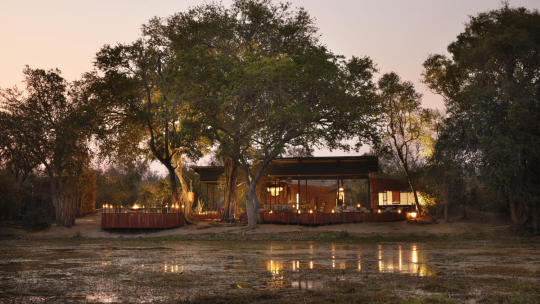








Molori Mashuma,
Mana Pools National Park, Zimbabwe, Africa,
Courtesy: Rora Private Collection
#art#design#architecture#boutique hotel#travels#luxury hotel#luxury lifestyle#interiors#luxury hotels#nature#molor mashuma#mana pools#africa#camp#safari#rora private collection#wildlife#unesco world heritage#zimbabwe
174 notes
·
View notes
Text



#HappyWomensMonth
#johannesburg#Eastern cape#East London#mdantsane#xhosa#pedi#sepedi#culture#heritage#cultural wedding#wedding#wedding photography#photography#outdoor photography#melanin#black women#black is beautiful#black tumblr#South africa#African women#brown skin#black don't crack
31 notes
·
View notes
Text

From Chains to Crown: Uncovering Your Roots in Ghana with Best Ghana Tours
As a member of the African diaspora, have you ever wondered about your ancestral heritage? Do you feel a deep connection to the continent of Africa, but aren't sure where to start exploring your roots? Look no further than Ghana, a country steeped in rich history, vibrant culture, and breathtaking natural beauty. And, with Best Ghana Tours, you'll have a trusted guide to help you navigate this transformative journey.

Ghana, formerly known as the Gold Coast, was a major hub for the transatlantic slave trade. Millions of enslaved Africans were forcibly taken from their homeland, leaving behind a legacy of pain, trauma, and disconnection. However, Ghana has emerged as a symbol of resilience, hope, and reunification.

The Call to Come Home
In 2019, Ghana launched the "Year of Return" initiative, inviting members of the diaspora to come home and reconnect with their heritage. This call to action marked the 400th anniversary of the first enslaved Africans arriving in Jamestown, Virginia. Since then, thousands have answered the call, making the journey to Ghana to discover their roots. Best Ghana Tours has been at the forefront of this movement, curating unforgettable experiences for those seeking to reconnect with their ancestral homeland.

Uncover Your History with Best Ghana Tours
With Best Ghana Tours, you'll embark on a journey of self-discovery, exploring:
- Cape Coast Castle, a former slave fort turned museum
- The National Museum of Ghana, showcasing the country's rich history and culture
- The vibrant markets of Accra, where you can find traditional textiles, crafts, and cuisine

Reconnect with Your Heritage
Best Ghana Tours offers immersive cultural experiences, allowing you to:
- Attend a traditional naming ceremony
- Learn traditional drumming or dance
- Indulge in delicious Ghanaian cuisine

Join the Movement
The "From Chains to Crown" movement is about reclaiming your heritage, embracing your identity, and connecting with your ancestral homeland. Join the thousands who have already made the journey home with Best Ghana Tours and experience the transformative power of Ghana for yourself.

Come Home to Ghana with Best Ghana Tours
So why wait? Book your tour with Best Ghana Tours today and get ready to uncover your roots in Ghana. Let the warmth of the Ghanaian people, the vibrancy of the culture, and the beauty of the land envelop you. You are not just a visitor – you are coming home.
Contact Best Ghana Tours:
[email protected] +233 503314400
Share Your Story
Have you already made the journey to Ghana with Best Ghana Tours or are you planning to? Share your story with us! Let's continue the conversation on social media using the hashtag.
#FromChainsToCrown #GhanaTravel #GhanaTours #Adventure #Nature #GhanaCulture #Tradition #Tourism #WestAfrica #Travel #Nature #Wildlife #safari #tourpackages #allinclusivepackages #travelwithus #traveltoghana #dettydecember #all #europe #ghanatourism #tour #tourpackages #travelwithus #landsccape #paradise #nature #adventure #explore #travel #travelling #inspiration #motivation #flowers #flowercore #photography #aesthetic #cottagecore #naturecore #mountains #cottage garden #cottage witch #farmcore #curators on tumblr #photographers on tumblr #dark academia aesthetic #goblincore #design #fashion #scenery #alternative
#fall aesthetic #artwork #landscape
#bestghanatours#tourism#travel#ghana#tour package#accra ghana#tourist#travelwithus#worldwide privacy tour#summer#diaspora#beyondthereturn#new york#homecoming#united states#europe#africa#vacation#holiday#dettydecember#decemberinghana#heritage#culture#history
31 notes
·
View notes
Text

Adut Akech was born in Sudan (in an area that later became part of South Sudan), but was raised in Kakuma, Kenya. Akech was born on Christmas Day, on the way to Kenya. She was 7 years old when she moved from Kenya along with her mother to Adelaide, Australia as South Sudanese refugees seeking asylum. They also had relatives there. Akech has five siblings.

Akech was known as "Mary", her Christian second name in Adelaide, as Australian teachers found it difficult to pronounce her name.

Be proud of African names, and stop falling into the trap of saying all African names are hard to pronounce. Like European names are easy


#adut#adut akech#sudan#ta seti#northeast africa#afrakan#kemetic dreams#africans#african#brown skin#brownskin#afrakans#african culture#afrakan spirituality#omowale#african names#african name#kenya#heritage#african heritage#african history#Adelaide#sydney#brisbane#melbourne#canberra#servicetasker#australia#austria#christian name
38 notes
·
View notes
Photo

The United Nations Educational, Scientific and Cultural Organization (UNESCO) has designated 147 World Heritage Sites in Africa. Ethiopia has the lead with eleven sites, followed by South Africa with ten, Morocco and Tunisia being home to nine sites.
by african.mapper
84 notes
·
View notes
Text
















Africa in Fashion
Luxury, Craft and Textile Heritage
Ken Kweku Nimo, Foreword by Deola Sagoe
Lawrence King, London 2022, 200 pages, 19x26cm, ISBN 978 1913 94 7958
euro 46,00
email if you want to buy [email protected]
Africa in Fashion explores the kaleidoscope of craft cultures that have shaped African fashion for centuries and captures the intriguing stories of contemporary and avant-garde African brands.
Part One looks at Africa's rich cultural heritage and place in the network of global fashion. The first chapter retells the history of African fashion, exploring Africa's textile traditions, artisanship and role as a global resource. The second chapter presents a New Africa and examines the promise and potential of Africa's markets, while challenging stereotypes and the concept of European hegemony particularly in the realm of luxury fashion. It also spotlights Africa's unique position as the global industry shifts towards a more sustainable future.
Part Two ushers the reader into the spectacular world of African fashion today. It showcases a carefully curated set of the continent's most dynamic brands and, through interviews with prominent and inspiring designers, offers rare insight into their ethos and design practice. Covering unisex fashion, menswear, womenswear, accessories and jewelry the brands are each purposefully selected to contribute uniquely to the mosaic of Africa evolving creative landscape.
10/06/24
36 notes
·
View notes
Text
#blackisbeautiful#ethiopian beauty#ethiopia#amhara culture#amharic people#habesha#blackwomen#blackbeauty#blackwomanmagic#blackwomenaredivine#blackwomenarestunning#african culture#blackandbeautiful#cultural practices#cultural heritage#cultural photoshoot#african heritage#african diaspora#africa#africanwomen#africanbeauty#african ancestry#africamatters#afrocentrism#blackgirlmagic#black people#blackgirlaesthetic#black joy#blackpride#blacktumblr
435 notes
·
View notes
Text
In southern Africa, leopards have long been harvested for their beautiful spotted furs. These coveted furs are often used in ceremonial regalia by cultural and religious groups in the area, making it difficult to address the dwindling wild cat population in the area.
Bridging the gap between animal conservation and cultural heritage, Panthera — a global wild cat conservation organization — has partnered with area communities and world-class designers to instead distribute synthetic furs for ceremonial garb.
This approach is ground-breaking and shows potential to be replicated in other areas of the world. In fact, new data shows that these initiatives have tripled the leopard population in the region.
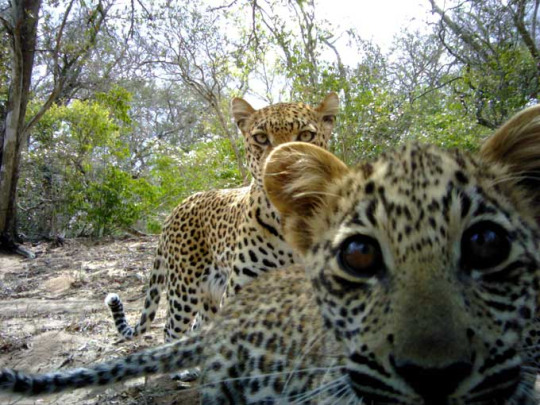
Pictured: Two wild leopards are spotted in southern Africa. Photo courtesy of Panthera.
It started in 2013 when Panthera began its Furs For Life program when it was discovered that members of the Shembe Church were using as many as 15,000 leopard furs during religious gatherings.
Working with the Shembe community, Panthera created high-quality (and affordable!) synthetic leopard fur capes — amambatha — known as Heritage Furs. Since then, more than 18,500 capes have been distributed.
In 2019, Panthera extended these efforts with the Saving Spots initiative. The program was created in conjunction with the Barotse Royal Establishment of the Lozi people with the mission to preserve rich cultural traditions and declining wild cat populations.
Every year, hundreds of Lozi community members wear lipatelo, elaborate full-length skirts made of leopard and other animal furs, as well as mishukwe, lion-mane trimmed berets, as they gather for the Kuomboka Festival...

Pictured: Paddlers on the Nalikwanda Royal Barge wearing Heritage Furs.
Since implementing the Saving Spots program, the Barotse Royal Establishment has switched to over 1,350 synthetic fur lipatelo and 600 synthetic fur mishukwe. At a recent Lozi gathering, nearly 70% of participants wore garments of synthetic furs.
The idea was to maintain the sacred relationship the Lozi people have with these animals. By using a high-accuracy design, these synthetic furs have become trusted regalia to pass through future generations — all without causing harm to the animals they revere.
“It is important to conserve nature. If you don’t take care of nature, then you are headed for doom,” Lubinda Nyaywa, the chairperson of the Mwandi Council District said. “It’s a learning process for our young generations, teaching them that they must preserve, one, their culture, and, two, their natural resources.”
With the support of both the Lozi and Shembe leaders, affordable synthetic furs are gaining increased acceptance and popularity as alternatives to authentic furs. Some groups have even banned the use of authentic wild cat skins at future gatherings.
This, in turn, majorly contributes to the protection and stabilization of wild cat populations in the region.
As mentioned, new data suggests that Saving Spots has helped triple leopard densities in the southern region of Kafue National Park.
-via Good Good Good, May 4, 2023
#leopard#leopards#conservation#endangered species#environmentalism#regalia#traditional clothing#sustainability#ethically sourced#lozi#shembe#zambia#africa#good news#hope#sustainable clothes#fur#fake fur#faux fur#heritage#tradition
189 notes
·
View notes
Text

What’s interesting about African art is that many pieces are created using natural materials like wood, clay, and metal.
#african#afrikan beauty#art history#artists on tumblr#my art#traditional art#afrique#19th century#home decor#interior design#young artist#heritage#traditional illustration#traditional design#african art#african history#africa#south africa#black history#history#vintage aesthetic#aestheitcs#artcollector#art collage#original art#art#artwork#black art
88 notes
·
View notes
Text

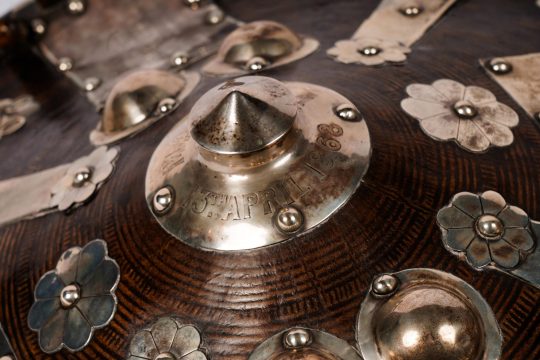
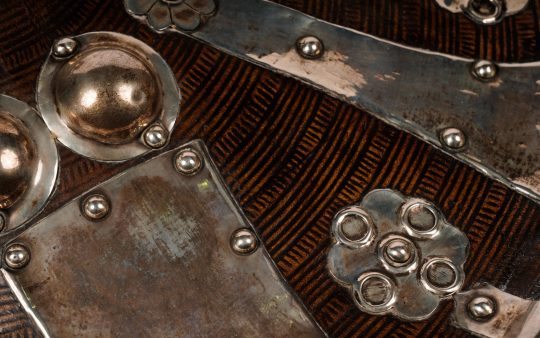
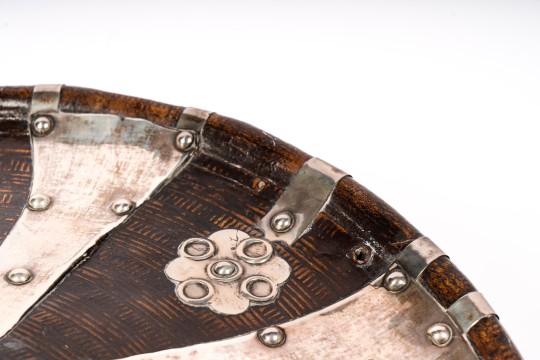
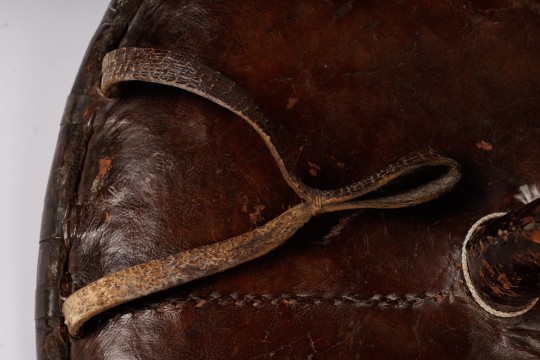

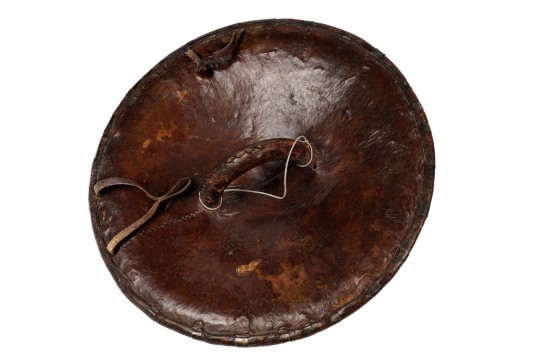
A 19th Century Abyssinian shield,
The circular dome shield made from hide and decorated in blind, with white metal strapwork and floral appliquets, the central boss engraved description "Magdala 13th April 1868", the reverse with carrying handle,
52cms diameter.
Lord Napier led the expedition of 1868 against Emperor Tewodros II of Abyssinia (modern day Ethiopia). The Abyssinian ruler was holding a number of Protestant missionaries hostage, in his mountain capital of Magdala, as well as two British diplomats who had attempted to negotiate their freedom.
After months of planning, the advance guard of engineers landed at Zula on the Red Sea to constuct a port on 30th October 1867; Napier himself arrived in Zula 2nd January 1868, on the 25th January 1868 Napier led his group south to Ethiopian highlands.
After traversing 400 miles of mountainess terrain in inhospitable weather, Napier's troops reached the foot of Magdala on the 9th April 1868, and the next day, defeated the 9000 troops still loyal to Tewodros at the battle of Magdala for the loss of only two British lives.
Although Emperor Tewodros II surrender his hostages and made repeated efforts for a negotiated surrender, the distrustful Napier pressed on and ordered an assault on the mountain redoubt on 13th April 1868. The British captured Magdala and Emperor Tewodros killed himself. Napier then ordered the destruction of Tewodros' artillery and the burning of Madgala as retribution. This included the expedition and its troops looting many local artifacts which they took back to Britian.
Napier was elevated to the peerage as Baron Napier of Magdala on 11th July 1868 and granted annuity and ammunity for life.
Courtesy: Anderson and Garland
#art#history#design#style#sculpture#antiquity#19th century#imperial#africa#african history#african heritage#tewodros II#magdala#shield#abyssinian#ethiopia#colonialism#colonial violence#napier#anderson&garland
41 notes
·
View notes
Text
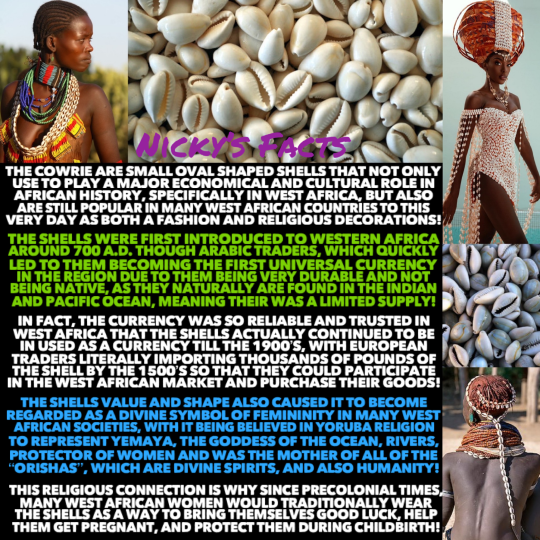
It’s amazing how many meanings one small shell can have!
🌊🐚
#history#cowries#africa#sea shells#currency#womens history#goddess#yemaya#black femininity#medieval#african history#age of discovery#cowrie shells#childbirth#african heritage#pre colonial#black girl magic#fertility#ocean#traditional femininity#black history#cottagecore#african women#yoruba#west africa#divine femininity#fashion#nickys facts
37 notes
·
View notes
Text
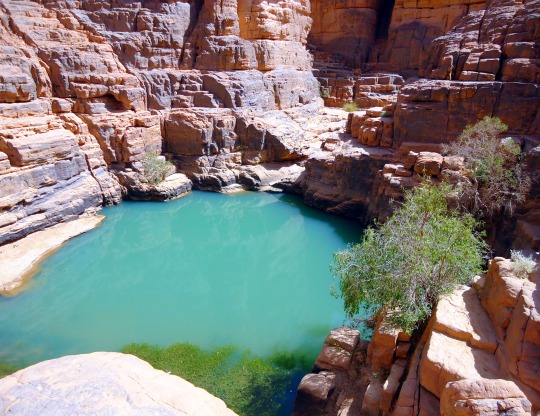
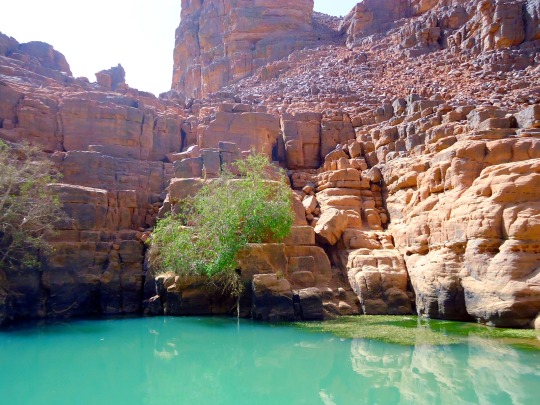
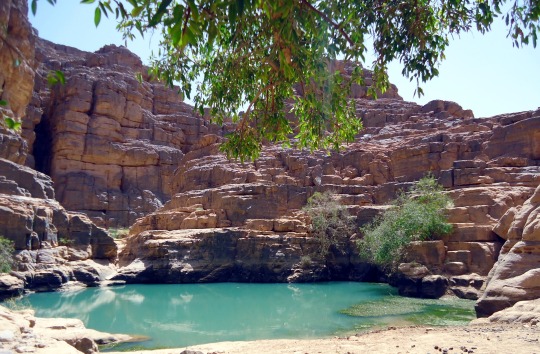
"THE GEOLOGICAL FORMATIONS ARE OF OUTSTANDING SCENIC INTEREST..."
PIC(S) INFO: Spotlight on Gueltade Tikoubaouine, Tassili n’Ajjer, Algeria, North Africa, a UNESCO World Heritage site. 📸: “Extraanis,” c. 2015 (via Wikimedia).
MINI-OVERVIEW: “Located in a strange lunar landscape of great geological interest, this site has one of the most important groupings of prehistoric cave art in the world. More than 15,000 drawings and engravings record the climatic changes, the animal migrations and the evolution of human life on the edge of the Sahara from 6000 BC to the first centuries of the present era. The geological formations are of outstanding scenic interest, with eroded sandstones forming "forests of rock.”
– UNESCO WORLD HERITAGE CONVENTION
Source: https://commons.m.wikimedia.org/wiki/File:Canyon_de_Tikoubaouine.JPG (3x).
#UNESCO World Heritage Site#UNESCO#Nature#Algeria#Photography#Geology#North Africa#Rock Formations#Africa#African Oasis#Geological Site#UNESCO World Heritage#North African#North African Landscapes#Landscapes#Geological#Rocks#Forests of Rock#Gueltade Tikoubaouine#Tassili n’Ajjer#Nature photography#World Heritage Site
19 notes
·
View notes